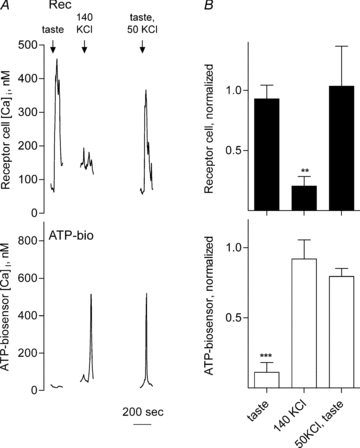Figure 4. Receptor (Type II) cells from TRPM5 knockout mice do not secrete ATP in response to taste stimulation, but do so when sufficiently depolarized.

A, simultaneous recordings of Ca2+ responses of an isolated receptor cell (Rec, top) isolated from a TRPM5 knockout mouse and a closely apposed ATP biosensor (ATP-bio, bottom). The arrows above the traces indicate application of taste mix, KCl or both. Applying taste stimuli evoked a response in the receptor cell but failed to elicit ATP secretion. However, when depolarized with 140 mm KCl, the receptor cell secreted ATP even in the absence of Ca2+ mobilization in the receptor cell. ATP secretion was rescued when taste mix and 50 mm KCl were co-applied (50 mm KCl alone did not trigger ATP secretion, data not shown). B, summary of data from TRPM5 knockout mice. Bars show mean ±s.e.m. of Ca2+ responses in receptor cells (filled bars, top) and concurrent ATP secretion (biosensor cell responses, open bars, bottom). Individual responses were normalized to the average of the responses evoked by a control stimulus of 1 μm ATP. N= 5 experiments, 10 cells. **P < 0.01; ***P < 0.001; Student's paired t test.
